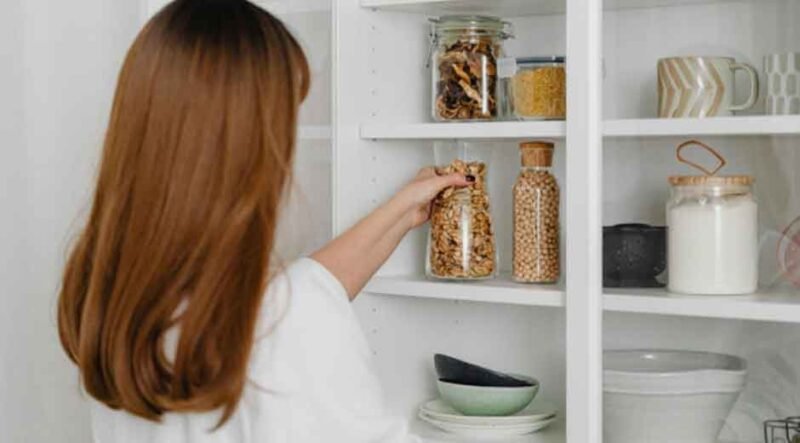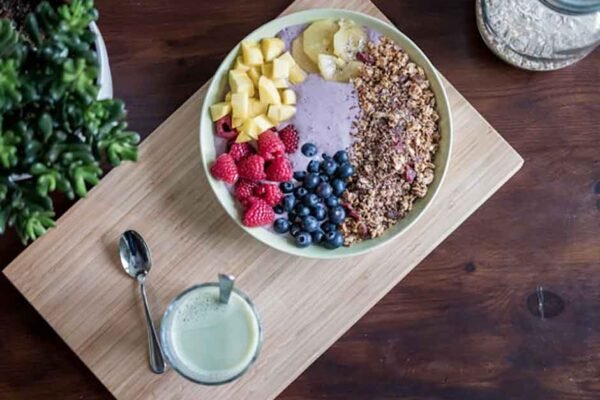
When life gets busy, it helps to have a few go-to items at home that make everyday choices easier. A health-supportive lifestyle doesn’t have to be complicated—it often starts in your kitchen. Having staples you enjoy, use often, and feel good about makes it simpler to prepare meals, snacks, and drinks that fit your needs.
Everyone’s kitchen looks different, and that’s part of the point. Whether you prefer quick meals, slow weekend cooking, or something in between, building a core list of ingredients that works for your lifestyle can help maintain a sense of balance.
Let’s take a look at how to stock your kitchen in a way that feels practical and sustainable.
What Counts as a Staple in Your Routine?
There’s no single definition of a “staple”—what works for one person might not matter much to someone else. For many people, staples are the foods and products they reach for most often. These might include shelf-stable basics like rice, oats, or canned beans. For others, it could be fresh ingredients like eggs, greens, or yogurt that they use several times a week.
Sometimes, staples aren’t food-related at all. Some people include wellness products in their daily routines as well. For instance, USANA Health Sciences offers a variety of wellness-focused supplements that individuals may incorporate as part of their personal routines. These additions vary from person to person but are often chosen for convenience and consistency.
Whether you’re stocking up on dry goods, condiments, or everyday items that fit into your morning or evening habits, the key is choosing things you know you’ll use. It’s not about following a standard list—it’s about building your own.
Pantry Basics That Make Meal Planning Easier
Having a few reliable pantry ingredients on hand helps take the guesswork out of daily meals. You don’t need a massive stockpile—just enough to cover the kinds of meals you regularly make.
Some examples include:
- Whole grainslike brown rice, oats, or quinoa
- Canned or dried beanssuch as black beans, lentils, or chickpeas
- Tomato productslike crushed tomatoes or paste for sauces and stews
- Cooking oilsthat suit your taste and style—olive oil, avocado oil, or sesame oil
- Dried herbs and spicesto bring flavor to simple meals
With a few of these in your pantry, it becomes easier to throw together meals even when your fridge is running low. You’re not starting from zero—you’re building from a solid base.
Fridge and Freezer Staples That Work on Repeat
In addition to dry goods, your refrigerator and freezer can also help maintain a steady flow of easy, everyday meals. You don’t need to overfill these spaces—just pick items that fit your usual routine.
For example:
- Eggs, milk, or plant-based alternativesfor quick breakfasts or baking
- Fresh or frozen vegetablesthat you can add to any dish
- Frozen berriesfor smoothies or oatmeal
- Plain yogurtor similar items for snacks or sauces
- Cooked grains or proteinsthat can be frozen in portions for later use
The goal isn’t to turn your fridge into a full meal kit service—it’s simply to make things easier during busy moments. Having a few key items ready can help you stay consistent without needing to plan every meal in advance.
Quick Add-Ons for Everyday Meals
Sometimes, it’s the small things that make meals feel more complete. If you enjoy topping your meals with flavor, texture, or a bit of variety, having a few add-ons can make a difference.
Ideas include:
- Nuts and seedsfor crunch and flavor
- Nut buttersto add richness or make a meal more filling
- Fresh herbsfor brightness (even frozen or dried ones can work)
- Simple sauceslike tahini, soy sauce, or vinaigrettes
- Whole-grain wraps or flatbreadsfor fast lunches or dinners
These kinds of additions can be flexible—you don’t need to follow a recipe to use them. Just keep what you like and use often, and skip the rest.
What to Skip: You Don’t Need Every Trendy Item
It’s easy to get caught up in lists of “must-have” groceries online, especially when influencers or blogs suggest dozens of expensive or unusual ingredients. But you don’t need a kitchen filled with trendy items to maintain a health-supportive lifestyle.
If something is outside your budget, hard to find, or simply not something you enjoy, it doesn’t need to be on your list. Your staples should reflect your habits, not someone else’s version of what’s essential.
Focus on ingredients you feel confident using, and that support your routines without extra effort. That way, you’re more likely to keep using them long-term.
Building a List That Works for You
Instead of copying someone else’s shopping list, it helps to build your own based on your real preferences and patterns. One way to start is by tracking what you run out of most often. These items usually reflect what you actually use, not what you feel like you “should” buy.
Consider:
- What ingredients show up in your meals most often?
- What do you reach for when you’re short on time?
- What staples help you stay consistent with eating at home?
From there, create a short list of items to keep in stock. It doesn’t need to be long or detailed—just enough to get you through a typical week.
Let Your List Evolve Over Time
Your needs and preferences will shift over time, and that’s okay. What feels essential in one season might not in the next. Maybe you’re cooking more from scratch one month and relying on quicker options the next. It’s normal for your grocery list to change with your lifestyle.
You might also experiment with new ingredients or adjust based on budget, time, or dietary preferences. The key is to allow your kitchen setup to work with your life—not the other way around.
Being flexible with your approach helps keep your grocery shopping and food prep manageable without feeling like an all-or-nothing effort.
Stocking your kitchen in a way that supports your daily life doesn’t have to be complicated. You don’t need to follow a rigid list or keep up with the latest food trends. The staples you choose should reflect how you live, what you enjoy, and what helps you maintain your own sense of consistency.
With a few items you know and trust, grocery shopping becomes less overwhelming, and your meals become more intuitive. Keep it simple, and let your kitchen work for you—not against you.









